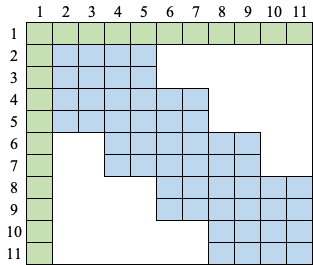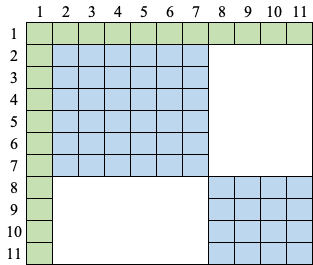This is the implementation for Improving Domain Generalization for Sound Classification with Sparse Frequency-Regularized Transformer
We propose FRITO, an effective regularization technique on Transformer's self-attention, to improve the model's generalization ability by limiting each sequence position's attention receptive field along the frequency dimension on the spectrogram. Experiments show that our method helps Transformer models achieve SOTA generalization performance on TAU 2020 and Nsynth datasets while saving 20% inference time.
Our scheme includes local and global attention, similar to the efficient transformers. This method differs from previous work in that it restricts the receptive field along the frequency dimension, aiming to improve the model's generalization ability instead of dealing with long sequences.
This repo uses forked versions of sacred for configuration and logging, and pytorch-lightning for training.
For setting up Mamba is recommended and faster then conda:
conda install mamba -n base -c conda-forgeNow you can import the environment from environment.yml
mamba env create -f environment.ymlNow you have an environment named ba3l. Now install the forked versions of sacred and pl-lightning and ba3l.
# dependencies
conda activate ba3l
pip install -e 'git+https://github.com/kkoutini/ba3l@v0.0.2#egg=ba3l'
pip install -e 'git+https://github.com/kkoutini/pytorch-lightning@v0.0.1#egg=pytorch-lightning'
pip install -e 'git+https://github.com/kkoutini/sacred@v0.0.1#egg=sacred' Each dataset has an experiment file such as ex_dcase20.py and ex_nsynth.py and a dataset folder with a readme file.
In general, you can prob the experiment file for help:
python ex_dcase20.py helpyou can override any of the configuration using the sacred syntax. In order to see the available options either use omniboard or use:
python ex_dcase20.py print_configThere are many pre-defined configuration options in config_updates.py. These include different models, setups etc...
You can list these configurations with:
python ex_dcase20.py print_named_configsThere are many things that can be updated from the command line. In short:
- All the configuration options under
trainerare pytorch lightning trainer api. For example, to turn off cuda benchmarking addtrainer.benchmark=Falseto the command line. models.netare the FRITO (or the chosen NN) options.models.melare the preprocessing options (mel spectrograms).
Download and prepare the dataset as explained in the TAU2020. The base FRITO model can be trained using:
python ex_dcase20_dev.py with models.net.rf_norm_t=row_overlap_8 use_mixup=True mixup_alpha=0.3 trainer.use_tensorboard_logger=True -p --debugwhere models.net.rf_norm_t can be set to row_overlap_{v} or per_row_{r}, which corresponds to the overlap factor
Multi-gpu training can be enabled by setting the environment variable DDP, for example with 2 gpus:
DDP=2 CUDA_VISIBLE_DEVICES=0,1 python ex_dcase20.py with models.net.rf_norm_t=high_low_branch trainer.use_tensorboard_logger=True -p --debugDownload and prepare the dataset as explained in the nsynth. The base FRITO model can be trained using:
python ex_nsynth.py with models.net.rf_norm_t=high_low trainer.use_tensorboard_logger=True -p --debugwhich is equivalent to:
python ex_nsynth.py with models.net.rf_norm_t=per_row_6 trainer.use_tensorboard_logger=True -p --debugwhere models.net.rf_norm_t can be set to row_overlap_{v} or per_row_{r}, which corresponds to overlap factor
Specifically, we implement models.net.rf_norm_t=sparse_row_{r} as the sparse version of models.net.rf_norm_t=per_row_{r}.
python ex_nsynth.py with models.net.rf_norm_t=sparse_row_6 trainer.use_tensorboard_logger=True -p --debugThe repo will be updated, in the mean time if you have any questions or problems feel free to open an issue on GitHub, or contact the authors directly.


